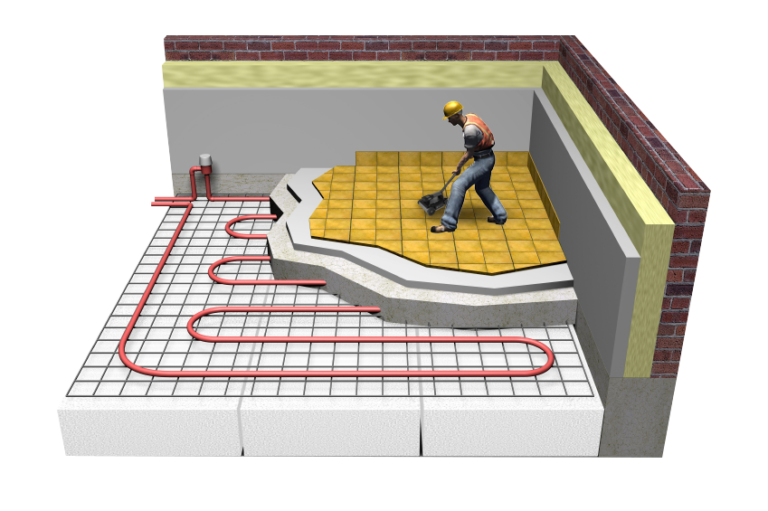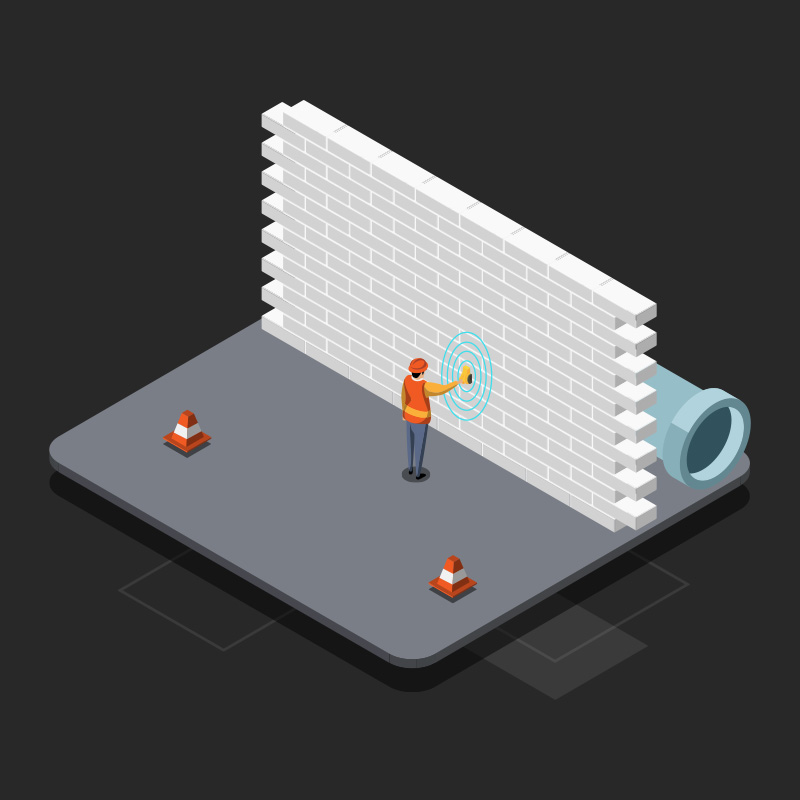The Importance of Accurate Concrete Scanning in Detecting Underground Hazards
In the world of building and framework advancement, the value of specific concrete scanning can not be overstated. Underneath the apparently solid ground lie elaborate networks of utilities, pipes, and various other subsurface structures that are commonly undetectable to the naked eye. The capacity to properly identify and map these underground risks is not just a matter of benefit but an essential facet of making certain the safety and security of both construction workers and the integrity of the job itself. By deploying advanced scanning modern technologies and approaches, experts can uncover covert risks, stop costly problems, and ultimately pave the means for smoother and much safer building and construction endeavors.
Advanced Scanning Technologies for Discovery
Cutting-edge radar systems are changing the area of underground discovery by supplying unequaled accuracy and effectiveness. These innovative scanning modern technologies utilize ground-penetrating radar (GPR) to develop in-depth pictures of subsurface structures, supplying insights into what exists underneath the surface area with impressive quality. By sending out high-frequency pulses into the ground and gauging the representations, radar systems can recognize variants in material make-up and spot underground hazards such as pipelines, cords, and spaces.
One of the vital advantages of these innovative radar systems is their non-invasive nature, enabling thorough evaluations without triggering damages to the existing structures. This not only guarantees the safety and security of the surrounding setting yet additionally reduces the demand for expensive repairs or disruptions to recurring building and construction projects. Furthermore, the real-time information supplied by these scanning modern technologies allows quick decision-making and boosts general project efficiency.
Importance of Subsurface Mapping

Accurate subsurface mapping assists in protecting against expensive problems to existing below ground infrastructure, lowering the danger of mishaps, and keeping project timelines. It allows job supervisors to make informed decisions regarding site planning, equipment implementation, and source allocation. In addition, subsurface mapping permits for much better coordination among different teams working with a job and helps in following regulatory requirements associated with underground utility detection.
Mitigating Risks in Building Tasks
Effective danger mitigation approaches are crucial for ensuring the success and security of building and construction projects. Identifying and attending to possible threats before they rise is crucial in preserving job timelines, budget plans, and overall quality. One essential element of mitigating threats in building projects is extensive preparation and evaluation at the first phases. Carrying out detailed website surveys, including accurate concrete scanning for below ground threats, can assist in determining potential concerns beforehand. Making use of innovative innovations like find out this here ground-penetrating radar and electromagnetic induction can aid in identifying energies, rebar, or other blockages that might present risks during building and construction.
Furthermore, establishing clear interaction networks amongst all project stakeholders and making certain stringent adherence to safety protocols are crucial elements of threat mitigation. By proactively executing durable risk reduction strategies, building projects can reduce hold-ups, expense overruns, and safety events, ultimately leading to effective project end results.

Stopping Costly Problems and Delays
To decrease monetary losses and project troubles, effective methods need to be executed to avoid expensive problems and hold-ups in construction tasks. One critical method to accomplish this is by performing thorough concrete scanning before any type of excavation work begins. By using sophisticated scanning technologies such as ground-penetrating radar (GPR) and electromagnetic induction, building and construction groups can accurately find underground hazards like rebar, avenues, and other utilities. Determining these obstructions at an early stage aids in planning the task format a lot more successfully and preventing potential damages during excavation.
In addition, spending in training programs for construction employees on the value of concrete scanning and safe excavation practices can substantially reduce the risk of delays and mishaps. Clear communication networks in between project managers, engineers, and on-site workers are also vital to make certain that everybody understands the potential threats and follows the required procedures to avoid costly damages. By focusing on proactive procedures like concrete scanning and promoting a culture of safety and security and understanding, building jobs can minimize the monetary impact of unforeseen below ground obstructions and stay clear of costly delays.
Ensuring Security of On-Site Personnel
By focusing on proactive actions such as detailed training programs and clear communication networks, building projects can ensure the safety and security of on-site employees in the middle of the potential hazards spotted with concrete scanning. Proper training gears up workers with the expertise and skills needed to browse building and construction sites securely, particularly when dangers are recognized with scanning processes. Training must cover threat acknowledgment, emergency procedures, and the proper application of individual protective equipment to minimize threats properly.
Additionally, establishing clear communication networks is critical for distributing info regarding recognized risks promptly. This ensures that all on-site workers understand prospective dangers and can take necessary safety measures to prevent crashes. Normal safety instructions, toolbox talks, and regular updates concerning scanning results assistance maintain everyone notified and positive in keeping a risk-free workplace.
Moreover, applying stringent adherence to safety and security protocols and policies, performing normal safety audits, and cultivating a society of look here security consciousness among employees are crucial elements in ensuring the health of on-site workers during construction tasks - RainierGPR Concrete Scanning. Proactive safety and security actions not just safeguard workers from damage yet additionally add to the overall success and efficiency of the project
Conclusion
To conclude, exact concrete scanning plays an essential function in identifying underground risks. Using sophisticated scanning modern technologies and subsurface mapping assists minimize threats in construction tasks, avoiding expensive damages and delays. By guaranteeing the security of on-site employees, accurate scanning can considerably boost the efficiency and success of building and construction procedures. It is imperative for building and construction companies to prioritize the usage of accurate scanning techniques to decrease possible hazards and guarantee a smooth building and construction process.

By proactively carrying out robust danger mitigation techniques, building and construction jobs can lessen delays, price overruns, and safety and security cases, inevitably leading to effective project results. - RainierGPR Concrete Scanning
To decrease financial losses and job problems, effective techniques should be implemented to avoid pricey damages and hold-ups in construction tasks. By focusing on proactive actions like concrete scanning and promoting a culture of safety and understanding, building jobs can reduce the financial effect of unanticipated underground blockages and prevent expensive delays.
By prioritizing proactive measures such as index detailed training programs and clear communication networks, building tasks can ensure the security of on-site workers in the middle of the potential risks detected with concrete scanning. Using sophisticated scanning technologies and subsurface mapping aids mitigate dangers in building projects, preventing costly damages and hold-ups.